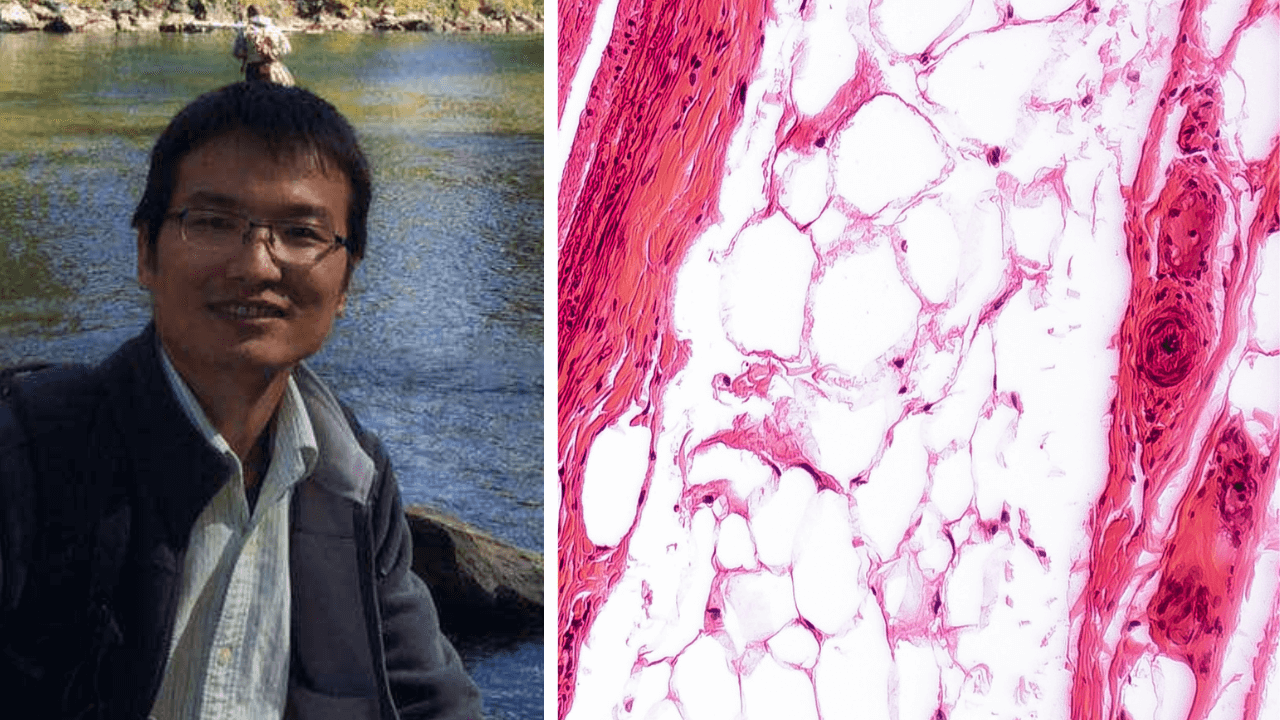Secreted Protein in Brown Fat Shown to Control Thermogenesis and Blood Glucose
Date Posted: Tuesday, December 27, 2022
Brown adipose tissue (fat tissue) is known to burn fat and improve metabolism while and white adipose tissue stores fat. Multiple labs on the UMass Chan Medical School campus are investigating strategies to activate beige fat from subcutaneous white fat as a potential therapy for people struggling with obesity and related metabolic diseases including type 2 diabetes.
Research in the laboratory of Yong-Xu Wang, PhD, Associate Professor, Department of Molecular, Cell and Cancer Biology, is exploring cellular and molecular mechanisms that control brown fat, and how to convert white adipocytes into brown-like adipocytes.
A newly published study in Nature Communications led by Qingbo Chen, PhD, describes a brown fat-enriched adipokine they call Adissp (Adipose-secreted signaling protein) that is a key regulator for white adipose tissue thermogenesis and glucose homeostasis. Adipokines are cell signaling proteins that are secreted by adipose tissue and they communicate with other organs including the brain, liver, muscles, and the immune system. Increasing brown or beige fat activity in mouse models decreases body weight and improves glucose tolerance. Secreted proteins could potentially be targeted in humans as a therapeutic approach to combat obesity and other metabolic diseases. “The purpose of our study was to locate a secreted protein that can activate brown or beige fat in order to decrease obesity and improve glucose tolerance,” said Dr. Chen, who did the work in Dr. Wang’s lab, and currently is a Senior Research Scientist in the Guertin Lab. “The goal is a molecular activation of brown adipocytes that could potentially help people therapeutically as an intravenous medication. What we find exciting about Adissp compared to other secreted proteins being studied for potential clinical use is the prospective lack of side effects because it expressed specifically in adipose tissue and functions independent of beta 3-adrenergic signaling pathway.”
When they knocked out Adissp specifically in the adipose tissue of the mice, this model generated less beige fat from white fat, and they were susceptible to obesity and hyperglycemia.
Dr. Chen is now focusing on a signaling pathway called mTORC1 that regulates cell growth and metabolism. “The research I’m conducting in the Guertin lab is asking similar questions but investigating the role of the mTORC1 pathway,” he said. “How it affects adipose thermogenesis, glucose homeostasis, and beige adipose tissue activity.”
Additional studies will determine if it would require an inhibitor or activator to use mTORC1 as a potential therapeutic target. Dr. Chen says he recently found an exciting result which they’re continuing to explore and plan to publish soon.
Related Articles
Type 2 Diabetes Research in the Czech Lab Investigating Beige Fat to Potentially Increase Metabolism
The Corvera Lab is Examining How Different Body Fat Plays a Role in Type 2 Diabetes
Corvera Lab Continues to Create "Good Fat" as a Potential Therapy for Type 2 Diabetes
